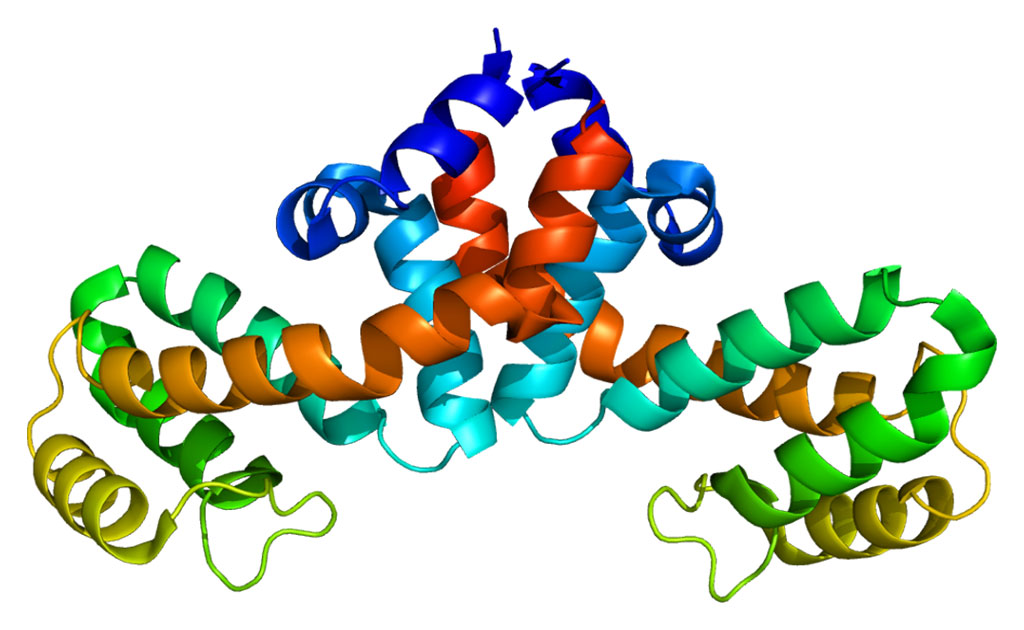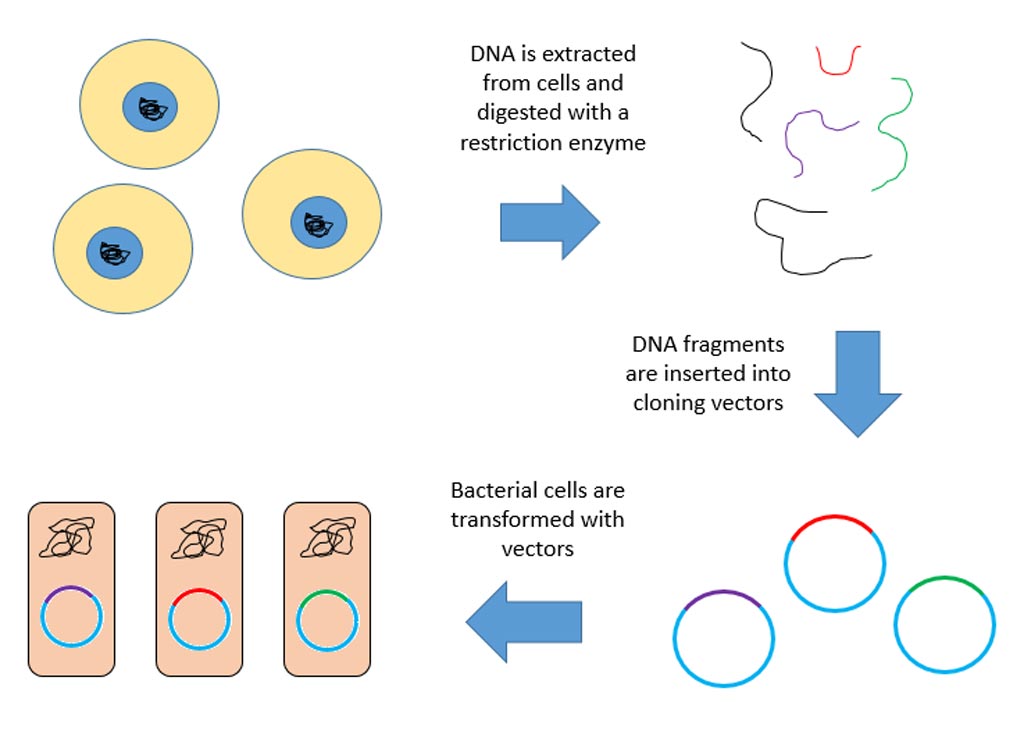Specialized Nuclear Bodies Delay and Promote Repair of DNA Damage
By LabMedica International staff writers
Posted on 14 Mar 2019
A molecular mechanism that helps minimize the impact of natural DNA errors, which occur during the process of cell division and replication, was identified and characterized in cultures of human cells.Posted on 14 Mar 2019
Failure to complete DNA replication is a by-product of genome doubling in almost every cell cycle. During mitosis, under-replicated DNA (UR-DNA) is converted into DNA lesions, which are inherited by daughter cells and sequestered in 53BP1 nuclear bodies (53BP1-NBs).

Image: Specialized proteins protect damaged DNA in the cell nucleus (pink shapes) until the damage can be repaired (Photo courtesy of the University of Copenhagen).
The fate of DNA with unresolved replication intermediates is not known. Previous studies showed that mild replication stress increased the frequency of chromosomal lesions that were transmitted to daughter cells. Throughout G1, these lesions were sequestered in nuclear compartments marked by p53-binding protein 1 (53BP1) and other chromatin-associated genome caretakers. The number of such 53BP1 nuclear bodies increased after genetic ablation of BLM, a DNA helicase associated with dissolution of entangled DNA. Conversely, 53BP1 nuclear bodies were partially suppressed by knocking down SMC2, a condensin subunit required for mechanical stability of mitotic chromosomes. In addition, 53BP1 nuclear bodies protected chromosomal fragile sites sequestered in these compartments against erosion.
In the current study, which was published in the February 25, 2019, online edition of the journal Nature Cell Biology, investigators at the University of Copenhagen (Denmark) showed that the formation of 53BP1-NBs interrupted the chain of repetitive damage intrinsically embedded in UR-DNA. This result was obtained by labeling 53BP1-NBs in living human cells using fluorescent dyes and then following them under a microscope over several successive generations. Using this method, the investigators traced the fate of inherited DNA damage directly from the time of generation in mother cells to their final destiny in daughter cells.
The investigators found that unlike clastogen-induced 53BP1 foci that were repaired throughout interphase, 53BP1-NBs restrained replication of the embedded genomic loci until late S phase, thus enabling the dedicated RAD52-mediated repair of UR-DNA lesions. A clastogen is a mutagenic agent giving rise to or inducing disruption or breakages of chromosomes, leading to sections of the chromosome being deleted, added, or rearranged. RAD52 is a protein that plays a central role in genetic recombination and DNA repair by promoting the annealing of complementary single-stranded DNA and by stimulation of the RAD51 recombinase.
The absence or malfunction of 53BP1-NBs caused premature replication of the affected loci, accompanied by genotoxic RAD51-mediated recombination (a genotoxic agent is a chemical or another agent that damages cellular DNA, resulting in mutations or cancer). Thus, by adjusting replication timing and repair pathway choice at under-replicated loci, 53BP1-NBs enabled the completion of genome duplication of inherited UR-DNA and prevented the conversion of under-replications into genome instability.
"53BP1 nuclear bodies delay cell division in daughter cells in order to reach the only remaining time in their lifecycle when they can mend DNA lesions that their mother caused but could not fix. This second chance is vital because it is also the last one. We have predicted and then experimentally documented that a failure of this second chance converts the initially curable DNA damage to one that can no longer be fixed. Accumulation of such mishaps could lead to disease, including cancer", said senior author Dr. Kai John Neelsen, assistant professor of protein research at the University of Copenhagen.
Related Links:
University of Copenhagen













